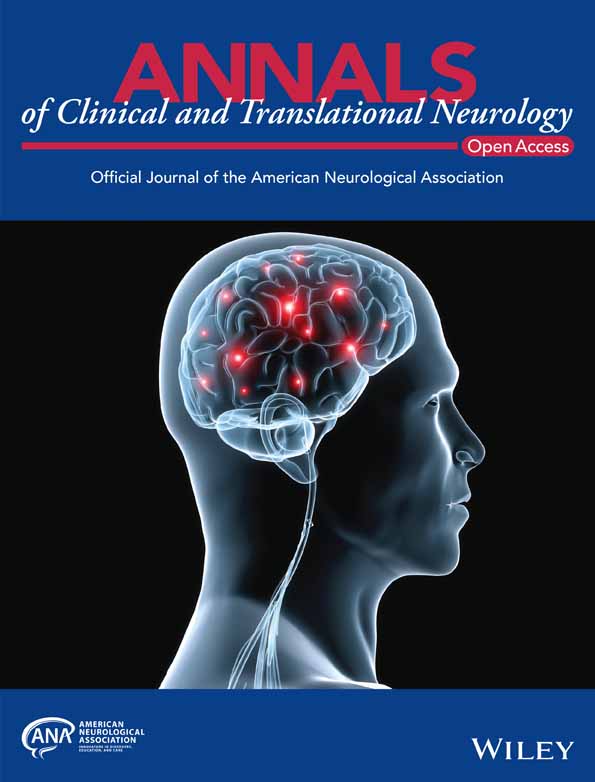Proteomic signatures of physical, cognitive, and imaging outcomes in multiple sclerosis
Abstract
Background
A quantitative measurement of serum proteome biomarkers that would associate with disease progression endpoints can provide risk stratification for persons with multiple sclerosis (PwMS) and supplement the clinical decision-making process.
Materials and Methods
In total, 202 PwMS were enrolled in a longitudinal study with measurements at two time points with an average follow-up time of 5.4 years. Clinical measures included the Expanded Disability Status Scale, Timed 25-foot Walk, 9-Hole Peg, and Symbol Digit Modalities Tests. Subjects underwent magnetic resonance imaging to determine the volumetric measures of the whole brain, gray matter, deep gray matter, and lateral ventricles. Serum samples were analyzed using a custom immunoassay panel on the Olink™ platform, and concentrations of 18 protein biomarkers were measured. Linear mixed-effects models and adjustment for multiple comparisons were performed.
Results
Subjects had a significant 55.6% increase in chemokine ligand 20 (9.7 pg/mL vs. 15.1 pg/mL, p < 0.001) and neurofilament light polypeptide (10.5 pg/mL vs. 11.5 pg/mL, p = 0.003) at the follow-up time point. Additional changes in CUB domain-containing protein 1, Contactin 2, Glial fibrillary acidic protein, Myelin oligodendrocyte glycoprotein, and Osteopontin were noted but did not survive multiple comparison correction. Worse clinical performance in the 9-HPT was associated with neurofilament light polypeptide (p = 0.001). Increases in several biomarker candidates were correlated with greater neurodegenerative changes as measured by different brain volumes.
Conclusion
Multiple proteins, selected from a disease activity test that represent diverse biological pathways, are associated with physical, cognitive, and radiographic outcomes. Future studies should determine the utility of multiple protein assays in routine clinical care.
Conflict of Interest Statement
Kian Jalaleddini, Ferhan Qureshi, Anisha Keshavan Shannon McCurdy, Kelly Leyden, and Ati Ghoreyshi are employees of and either hold stock or stock options at Octave Bioscience. Dejan Jakimovski received honoraria for serving on the advisory board of AstraZeneca. He also serves as an Associate Editor for Clinical Neurology and Neurosurgery and compensated by Elsevier B.V. Niels Bergsland has nothing to disclose. Murali Ramanathan received research funding from the National Multiple Sclerosis Society, Department of Defense and National Institute of Neurological Diseases and Stroke. Michael G. Dwyer received compensation from Keystone Heart for consultant fees. He received financial support for research activities from Bristol Myers Squibb, Mapi Pharma, Keystone Heart, Protembis, and V-WAVE Medical. Bianca Weinstock-Guttman received honoraria for serving in advisory boards and educational programs from Biogen Idec, Novartis, Genentech, Genzyme and Sanofi, Janssen, Abbvie, and Bayer. She also received support for research activities from the National Institutes of Health, National Multiple Sclerosis Society, Department of Defense, and Biogen Idec, Novartis, Genentech, Genzyme, and Sanofi. Ralph HB Benedict received honoraria, speaking, or consulting fees from BMS, EMD Serono, Genentech, Novartis, Roche, and Sanofi, and has received research support from BMS, National Institutes of Health and National Multiple Sclerosis Society. He has received royalties from Psychological Assessment resources, Inc. Robert Zivadinov has received personal compensation from Bristol Myers Squibb, EMD Serono, Sanofi, Keystone Heart, Protembis, and Novartis for speaking and consultant fees. He received financial support for research activities from Sanofi, Novartis, Bristol Myers Squibb, Octave, Mapi Pharma, Keystone Heart, Protembis, and V-WAVE Medical.




